Over 30 years of anarchist writing from Ireland listed under hundreds of topics
1913
What was the 1913 Dublin Lockout
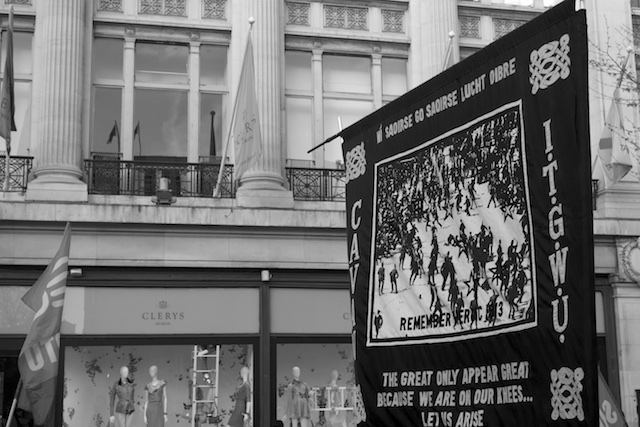 The 1913 lockout occurred when the Dublin bosses under William Martin Murphy tried to destroy the syndicalist ITGUW by locking out all workers who refused to resign from the union.
The 1913 lockout occurred when the Dublin bosses under William Martin Murphy tried to destroy the syndicalist ITGUW by locking out all workers who refused to resign from the union.
1913 Lockout in Dublin & Larkinism - beyond the myths
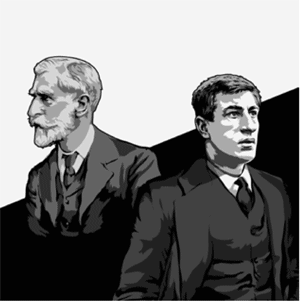 In this article, Donal Ó Fallúin looks briefly at the politics, ideas and misconceptions around the Dublin Lockout of 1913, and shows that the event is much more complex than many have allowed it to be, by attempting to narrow it down to a small event within the nationalist narrative of the period.
In this article, Donal Ó Fallúin looks briefly at the politics, ideas and misconceptions around the Dublin Lockout of 1913, and shows that the event is much more complex than many have allowed it to be, by attempting to narrow it down to a small event within the nationalist narrative of the period.
The 1913 Lockout is a monumental event in the history of the Irish working class. It marks the single greatest confrontation between the forces of labour and capital in Irish history, and the six-month dispute which tore Dublin apart saw a new, militant spirit of trade unionism collide with the force of native capitalism in an unprecedented manner.
The Croke Park Agreement – the very antithesis of Larkin’s trade unionism
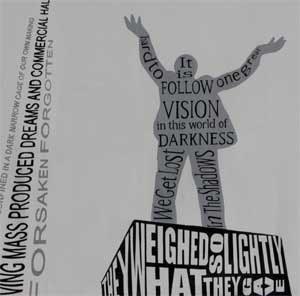 Next year, 2013, will mark the 100th anniversary of what many see as the most significant industrial dispute ever to have taken place in Ireland - the Dublin Lockout. The employers of Dublin, led by William Martin Murphy, locked out over 20,000 workers in an attempt to starve them into submission and to smash the increasingly popular Irish Transport and General Workers Union (ITGWU).
Next year, 2013, will mark the 100th anniversary of what many see as the most significant industrial dispute ever to have taken place in Ireland - the Dublin Lockout. The employers of Dublin, led by William Martin Murphy, locked out over 20,000 workers in an attempt to starve them into submission and to smash the increasingly popular Irish Transport and General Workers Union (ITGWU).
An anarchist look at the ideas of James Connolly - the single most important figure in the history of the Irish left
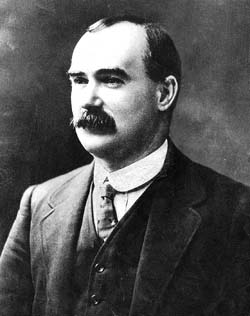 James Connolly is probably the single most important figure in the history of the Irish left. He was an organiser in the IWW in the USA but in Ireland is best known for his role in building the syndicalist phase of Irish union movement and for involving the armed defence body of that union, the Irish Citizens' Army in the 1916 nationalist insurrection. This left a legacy claimed at one time or another not only by all the Irish left parties but also by the nationalists of Fianna Fail and Sinn Fein. In this article I will attempt to look at the long neglected anarchistic aspects of Connolly's thought and ask the question was Connolly a libertarian?
James Connolly is probably the single most important figure in the history of the Irish left. He was an organiser in the IWW in the USA but in Ireland is best known for his role in building the syndicalist phase of Irish union movement and for involving the armed defence body of that union, the Irish Citizens' Army in the 1916 nationalist insurrection. This left a legacy claimed at one time or another not only by all the Irish left parties but also by the nationalists of Fianna Fail and Sinn Fein. In this article I will attempt to look at the long neglected anarchistic aspects of Connolly's thought and ask the question was Connolly a libertarian?
The Dublin Lock-out of 1913 and the ITGWU
In 1913 militant trade unionism had a tremendous task ahead of it. The poverty of manual workers was appalling. The death rate in Dublin, 27.6 per 1OOO, was as high as Calcutta's, The slums were the worst of any city in either Ireland or Britain. 20,108 families were recorded as living in a single room. An Irish Times editorial commenting on a report about Dublin housing wrote that "28,000 of our fellow citizens live in dwellings which even the Corporation admits to be unfit for human habitation. Nearly a third of our population so live that from dawn to dark and from dark to dawn it is without cleanliness, privacy or self respect. Sanitary conditions ruled out ordinary standards of savage morality''
Clery's: The Case for Occupation
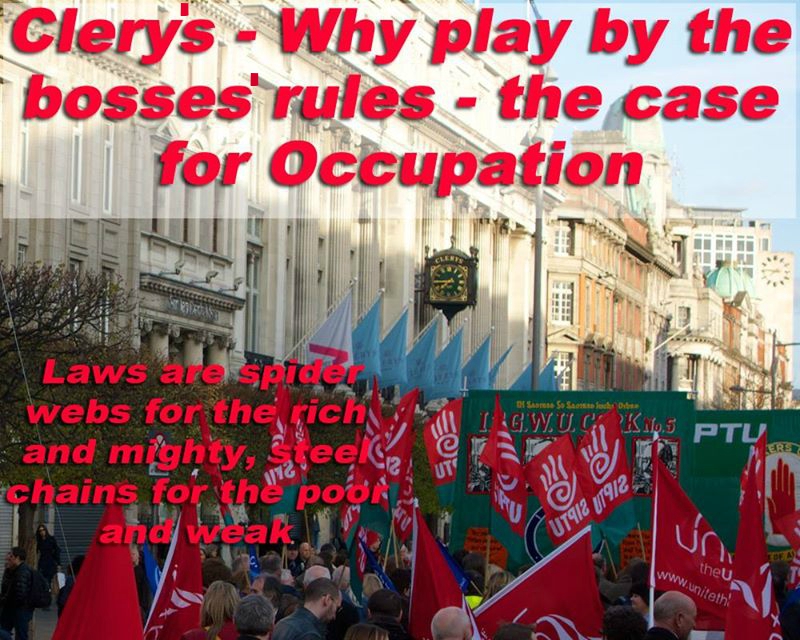 Fridays shock closure of the iconic Clery’s department store in Dublin shows how the law is set up to favour capital and screw workers. Workers are being told there may be no additional redundancy or owed holiday payments as the company is in debt. But this is only the case because right before the closure the largest asset, the building itself, was separated off from the accumulated debts. This was almost certainly legal under our system but of such obvious dubious morality that the workers could expect massive popular support if they occupied the building on a permanent ongoing basis.
Fridays shock closure of the iconic Clery’s department store in Dublin shows how the law is set up to favour capital and screw workers. Workers are being told there may be no additional redundancy or owed holiday payments as the company is in debt. But this is only the case because right before the closure the largest asset, the building itself, was separated off from the accumulated debts. This was almost certainly legal under our system but of such obvious dubious morality that the workers could expect massive popular support if they occupied the building on a permanent ongoing basis.
According to SIPTU unions organisers some of the workers are owned “four or five weeks’ wages” and the limited redundancy they will get will come not from the company but from the rest of us via the government’s insolvency and social insurance fund which pays out statutory redundancy when companies declare bankruptcy. In other words all those costs are to paid by us.
Review: 100 Years Later: The Legacy of the 1913 Lockout.
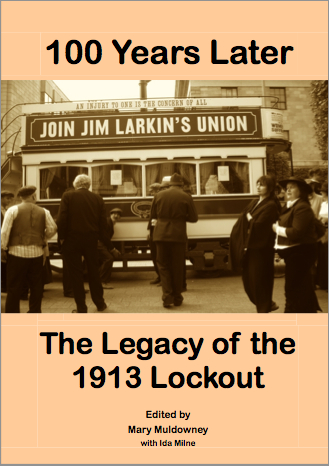 History has traditionally been viewed through the prism of ‘great leaders’ or ‘powerful men’ (and it usually is men). In recent years, however, the importance of community or local history – and the contributions of ‘ordinary’ people to great events – has been recognised. To paraphrase Jim Larkin “The great leaders only appear great because of the commitment, sacrifice and energy of ordinary people”.
History has traditionally been viewed through the prism of ‘great leaders’ or ‘powerful men’ (and it usually is men). In recent years, however, the importance of community or local history – and the contributions of ‘ordinary’ people to great events – has been recognised. To paraphrase Jim Larkin “The great leaders only appear great because of the commitment, sacrifice and energy of ordinary people”.Dún Laoghaire commemorates 1913
On the weekend of 22nd – 25th August Dún Laoghaire will host a series of events to mark the centenary of the 1913 Lockout.
The weekend will kick off with the launch of an exhibition ‘Dún Laoghaire & The 1913 Lockout’ and a Commemorative Book. The exhibition and book will be launched by Myles Dungan, historian and broadcaster with readings by Martina Devlin, author and journalist. This launch is on Thursday 22nd August at 6:30p.m. in the National Maritime Museum (Moran Park), and the exhibition will run at this venue until 18th January 2014 – the same period as the 1913 Lockout. The Commemorative Book will feature contributions by Padraig Yeates, Joe Duffy, Myles Dungan, Martina Devlin, May Moran and Mike Lee and will be available for sale at the launch and at all the weekend events for €10.
The state of the unions - the legacy of 1913 and the trade union movement today
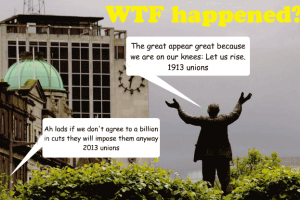 Having spent the early part of this week at the annual conference of my union – the Irish National Teachers Organisation – I’m struck by the view that unions today appear to be a different world entirely from that of 100 years ago. My talk will focus less on 1913 and more on where the trade union movement finds itself today
Having spent the early part of this week at the annual conference of my union – the Irish National Teachers Organisation – I’m struck by the view that unions today appear to be a different world entirely from that of 100 years ago. My talk will focus less on 1913 and more on where the trade union movement finds itself today
Exploring the Lessons of the 1913 Lockout and its Legacy for Today - DABF 2013
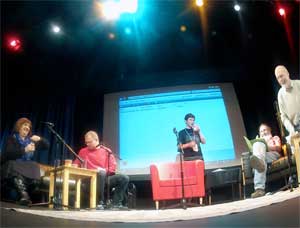 2013 marks the 100th anniversary of what many see as the most significant industrial dispute ever to have taken place in Ireland - the Dublin Lockout. The employers of Dublin, led by William Martin Murphy, locked out over 20,000 workers in an attempt to starve them into submission and to smash the increasingly popular Irish Transport and General Workers Union (ITGWU).
2013 marks the 100th anniversary of what many see as the most significant industrial dispute ever to have taken place in Ireland - the Dublin Lockout. The employers of Dublin, led by William Martin Murphy, locked out over 20,000 workers in an attempt to starve them into submission and to smash the increasingly popular Irish Transport and General Workers Union (ITGWU).

